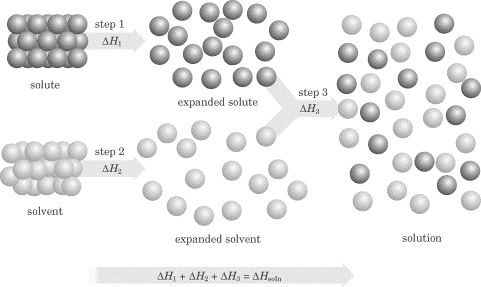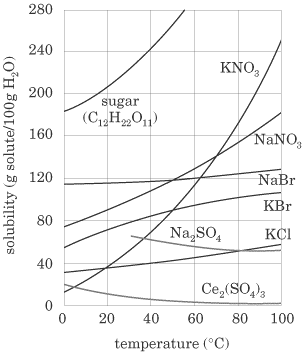In order for a solute to be dissolved in a solvent, the attractive forces
between the solute and solvent particles must be great enough to overcome the
attractive forces within the pure solvent and pure solute. The solute and the
solvent molecules in a solution are expanded compared to their position within
the pure substances.

The process of expansion, for both the solute and solvent, involves a change in
the energy of the system: this process can be either exothermic or endothermic.
After dissolving, the solute is said to be fully solvated (usually by
dipole-dipole or ion-dipole forces), and when the solvent is water, the solute
is said to be hydrated. The separation of the solute particles from one
another prior to dissolving is an endothermic process for both solvent and
solute (steps 1 and 2), but when the solute and solvent combine with each other,
this is an exothermic process (step 3). If the energy released in step 3 is
greater than the energy absorbed in steps 1 and 2, the solution forms and is
stable.
The term solubility refers to the maximum amount of material that will
dissolve in a given amount of solvent at a given temperature to produce a stable
solution. By looking at the plot of solubilities below, you can see that most
solids increase in solubility with an increase in temperature.

Gases, however, decrease in solubility with an increase in temperature.